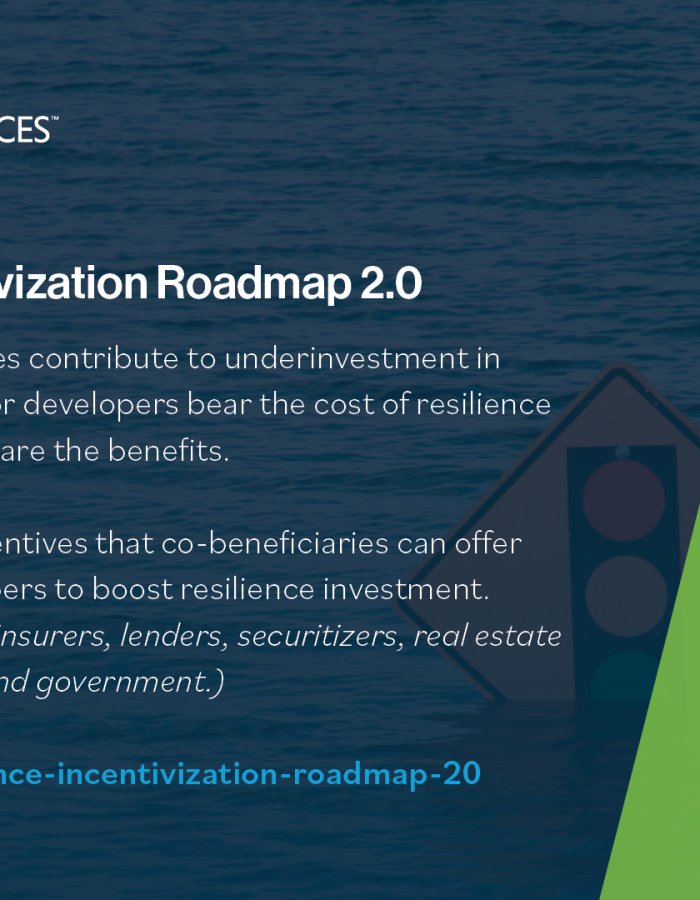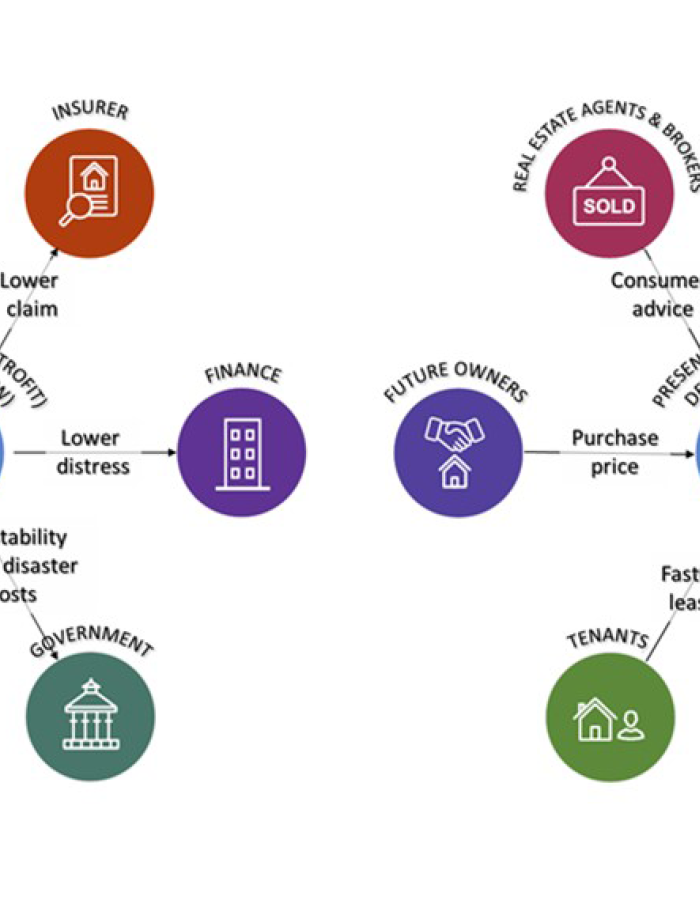Building Innovation: Who Gets Your Vote for the 2024 Future Leaders Award?
Representatives from the National Institute of Building Sciences Multihazard Mitigation Council (MMC) and Council on Finance, Insurance and Real Estate (CFIRE) headed to Capitol Hill September 22 to brief Congressional staff about updated research and recommendations on incentivizing mitigation.
Earlier this year, the Institute went before the U.S. House of Representatives Committee on Transportation and Infrastructure, Subcommittee on Economic Development, Public Buildings and Emergency Management to give testimony based on the MMC-CFIRE white paper, Developing Pre-Disaster Resilience Based on Public and Private Incentivization. That ground-breaking work described how the nation can achieve resilience to hazards in a cost-effective manner through a holistic and integrated set of public, private and hybrid programs that incentivize action. André Carson (D-Indiana), Ranking Member of the Subcommittee, requested this follow-up briefing to help educate Congressional staff.
Many experts believe that, as the heart of each community’s economic base, private-sector businesses need to be a significant part of each community’s resilience efforts. The National Institute of Building Sciences Multihazard Mitigation Council (MMC) will host a webinar, “How Does Business Continuity Contribute to Community Resilience?” on Tuesday, November 15, from 2:00 to 3:00 pm ET, to describe the importance of including business continuity (BC) planning activities when discussing community resilience planning.
Learn what BC and business continuity management (BCM) mean in the private sector; find out about key BC references for selected industries; and hear about good practices as defined by disaster recovery and BC professional associations. The presentation will highlight success stories and look at how local businesses can help communities recover vital functions after disruptive events.
The National Institute of Building Sciences Multihazard Mitigation Council (MMC), with the financial support of the Federal Emergency Management Agency (FEMA), the International Code Council (ICC) and the Insurance Institute for Business & Home Safety (IBHS), is beginning a new study to look at the cost effectiveness of disaster mitigation efforts in the public sector, as well as the benefits of using codes to mitigate the impact of natural disasters in the private sector. The Institute is continuing to seek additional supporters as this research effort gets under way.
The National Institute of Building Sciences (NIBS) earned a 2019 Power of A Silver Award for its Mitigation Saves Study, a multi-year study on natural hazard mitigation
The American Society of Association Executives honored the study, which was launched by NIBS to highlight the significant savings that result from implementing mitigation strategies. The goal of the study is to increase safety, prevent property loss, and reduce disruption of day-to-day life within communities.
When it comes to reducing the impact of natural disasters, mitigation improves safety, prevents property loss, and keeps disruption to a minimum, says a report by the National Institute of Building Sciences.
“While COVID-19 presents our nation with unprecedented challenges, natural disasters are continuing,” says Lakisha A. Woods, CAE, President and CEO of NIBS. “Millions of Americans are exposed to these disasters. Mitigation is a crucial step to keeping our homes, businesses, and communities safe.”
Images of smoky, apocalyptic skylines from the West Coast have flooded social media feeds and news headlines in recent days.
One fire – the CZU Lightning Complex Fire – was started by lightning strikes in the middle of August. Many California residents in Santa Cruz and San Mateo counties frantically worked to clear brush and spray down their homes as the fires approached, before being evacuated by local law enforcement. It has taken 28 days to reach 89 percent containment with this single wildfire event.
The National Institute of Building Sciences applauds the introduction of the Flood Resiliency and Taxpayer Savings Act of 2020 in the U.S. House of Representatives on Sept. 30. The bipartisan legislation was introduced by Representatives David Price (D-NC) and Lee Zeldin (R-NY) to better safeguard communities and infrastructure from future flooding events and storms.
NIBS joined more than 30 stakeholder groups to sign a letter that calls for a pragmatic approach to enhance the safety of federal investments and communities when building and rebuilding in flood-prone areas.

By Christine Cube
In September, NIBS and Fannie Mae unveiled the Resilience Incentivization Roadmap 2.0 – a continuation of a 2020 study that called for public and private incentives that allow owners of buildings and other infrastructure to facilitate the upgrade of existing infrastructure and better design of new infrastructure.

With the support of Fannie Mae, the National Institute of Building Sciences has developed a roadmap on mitigation investment to help Americans and the nation’s built environment prepare for and respond to the devastating effects of extreme weather.
Project Background